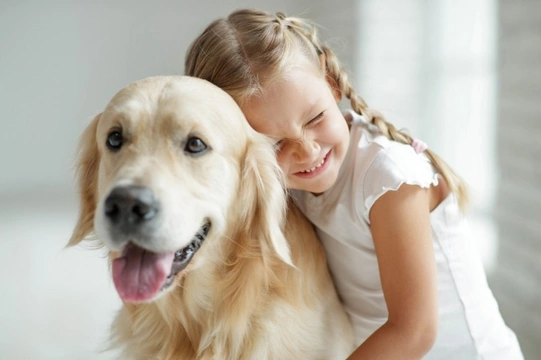
Dogs, children and hygiene: The often-overlooked aspect of keeping children safe around dogs
When dog owners and parents alike think about keeping children safe around dogs, most of them have very clear and immediate ideas about the potential threats; such as snapping teeth, growling, a child running up to strange dogs, trying to take a dog’s food, or getting into a dog’s space when they’re not receptive to an approach.
Naturally, any such scenario is a potentially dangerous one, and one that parents and dog owners alike would view as a total nightmare if it happened to them. Ergo, parents tend to teach children from a young age about how to behave around dogs (and vitally, when to avoid them entirely) and dog owners too take pains to protect both children and their dogs. After all, a dog that hurt a child is a dog that will almost certainly be put to sleep as a result, and so keeping dogs on leads, using muzzles, and not leaving them unsupervised outside of shops etc., is vital for dogs that are scared of or unpredictable around children.
However, there are a number of other threats that dogs and contact with dogs can pose to children too, even when the dog in question is calm, friendly, and hugely reliable; including dogs that love children and are very protective over them.
These threats don’t come from the dog itself and their deliberate actions, however; but simply due to poor hygiene practice!
Poor hygiene around dogs and failing to teach children about dogs and good hygiene might not cause the same acute fear as seeing a dog growling at a child, but can be just as harmful in the long term; and yet dogs, children and hygiene, and how to bring all three things together is paid far less attention by both dog owners and often, parents.
With this in mind, this article will tell you five of the main threats to children’s health when it comes to dogs and hygiene, and outline what you need to teach children in order to ensure that they practice good hygiene with dogs and stay safe. Read on to learn more.
Don’t let dogs lick your face
Children often think it is hilarious when dogs lick their faces, and a disappointing number of adults actually allow or even welcome their dogs doing this to themselves, and think this is ok. The mouth of any dog is laden with bacteria, and of vastly different types than reside in our own mouths; and dogs of course lick themselves too, including their own butts and genitalia… and sometimes those of other dogs as well…
Some dogs even eat poop, as well as vile things like rotting roadkill, and permitting a dog to lick a child’s face, or failing to teach your child that this is not ok poses a number of risks to your child’s health.
Don’t play in areas where lots of dogs toilet, or where there is poop on the ground
Dog faeces is nasty; not just because it is poop per se (although there is that to bear in mind) but because it is also dangerous stuff, and can carry infections, parasites, and a wide range of other threats to the health of both dogs and people.
This is one of the key reasons why today, picking up after your dog is the law and strongly enforced; anyone who was around in the 1980’s or earlier will remember a time when this wasn’t the case, and a walk down the average suburban street or in a park meant dodging around piles of turd.
For this reason, it is wise not to let your kids play in areas of parks where a lot of dogs run and toilet, or on ground where poop isn’t picked up immediately; which might be the case, say, in the garden of a friend with a dog.
Remember too, that playing football or other games can result in the transfer of faecal matter onto your child’s hands when they handle their toys, even if you cannot see or smell it.
Avoid sand pits other than your own that you manage carefully
Sand pits and similar types of play equipment aren’t common today in public parks and play areas, largely because they’re a huge hazard! You cannot tell what is lurking in the sand, such as broken glass or even needles; and also, sand pits can be an appealing spot for dogs (and particularly, cats) to toilet.
Never let your child play in a sand pit (or even on a sandy spot other than say, on a beach) that you aren’t directly responsible for and managing carefully – like one that you have set up at home, check regularly, and cover when not in use.
Worms, ringworm and avoiding parasites
Intestinal worms from dogs can be transferred through dog saliva and contact with faecal matter, and dogs can also transmit a fungal skin condition called ringworm to people too.
Avoiding transmission of ringworm can be really challenging even if you know a dog is infected and you practice excellent hygiene, but ensuring that your child washes their hands after every interaction with dogs (showing them how to do this properly, with soapy, warm enough water and washing above the wrist) is important. This is something that needs to be practiced and reinforced so that it becomes routine to your child.
This is good practice that can help to protect your child against all kinds of dog-related nasties!
Don’t share food with the dog
Finally, children need to be taught the rules about dogs and food, including not taking the dog’s food or bothering them when they’re eating. They also need to be taught not to share food with the dog – and not to eat anything the dog has licked or had in their mouth, like a sweet!



